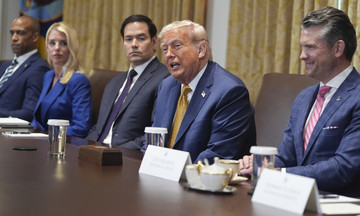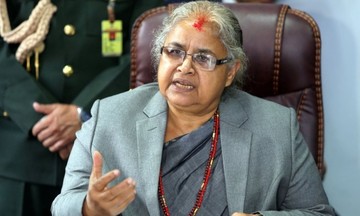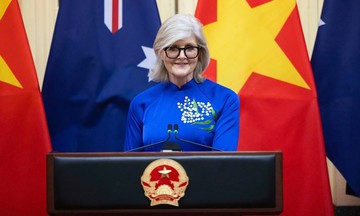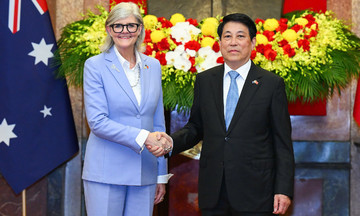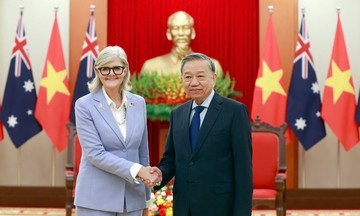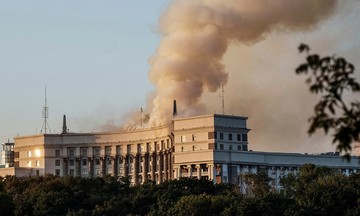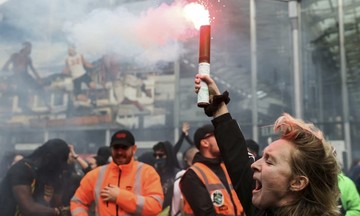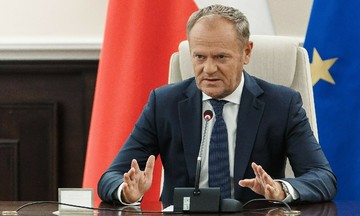According to local media, prisoners escaped from at least seven Nepalese prisons amid protests led by Generation Z, those born between 1997 and 2012.
Republica reported that 36 inmates escaped from the prison in Chandanath-6, Jumla District, Karnali Province, in the early morning of 10/9. The prisoners attacked guards with weapons, reportedly wooden sticks. 62 inmates remain at the prison.
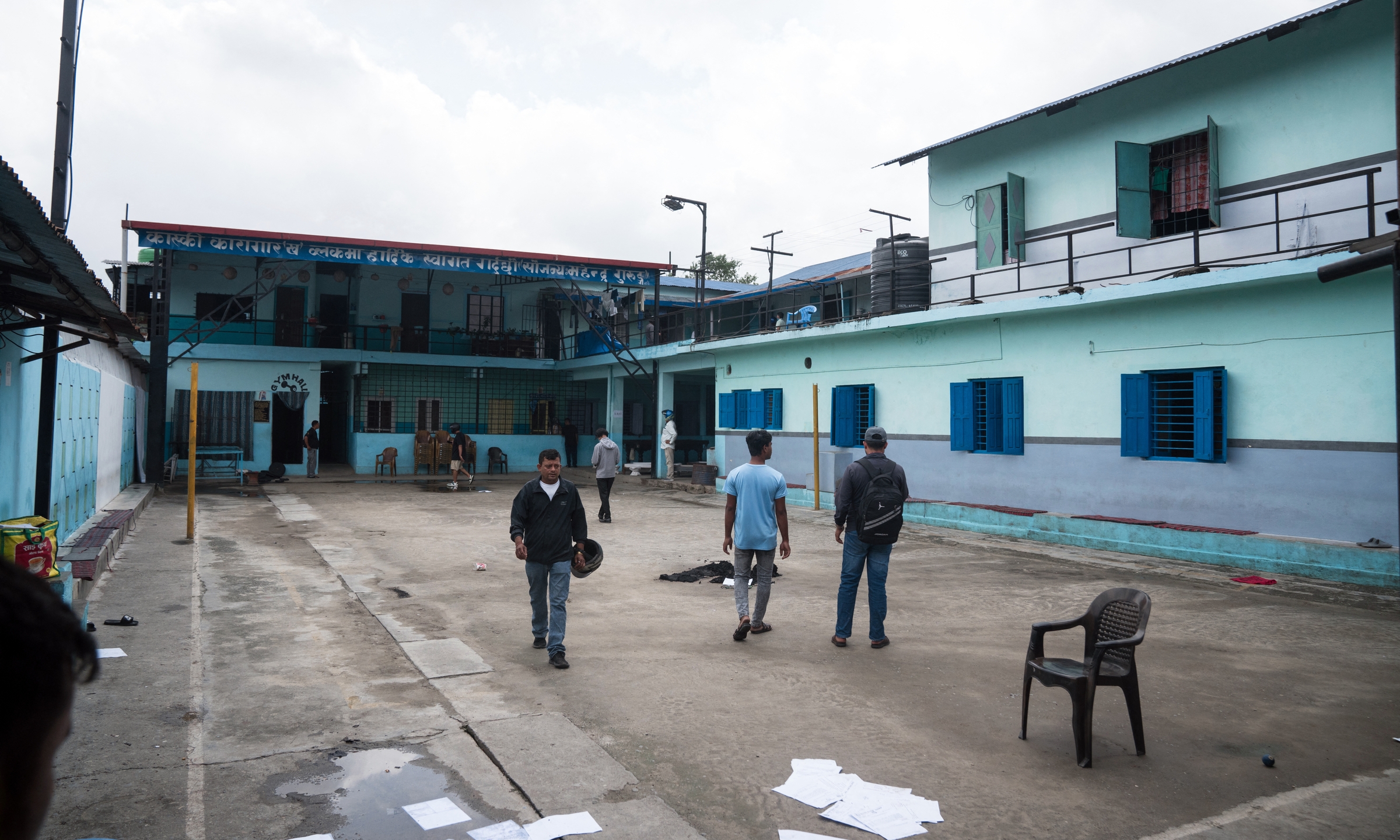 |
A view of Kaski prison in Nepal on 10/9, a day after 773 inmates escaped from the facility. Photo: AFP |
A view of Kaski prison in Nepal on 10/9, a day after 773 inmates escaped from the facility. Photo: AFP
Nepal's Aaj Tak reported that, taking advantage of the chaos, 576 of 577 inmates at Jaleswar prison escaped. Authorities are conducting a search operation for the escaped prisoners.
TV9 Bharatvarsh reported that nearly all the inmates at Gaur prison in Rautahat District, Narayani Zone, central Nepal, also escaped. The Asia Media Centre quoted the Kaski District police office as saying 773 inmates fled when protesters stormed the prison grounds on the afternoon of 9/9. In Dang Province, the Tulsipur police office reported 127 inmates escaped from the local prison during similar riots.
In total, over 13,500 inmates escaped from prisons across the country, Nepalese police spokesman Binod Ghimire said, adding that three police officers were also killed in the chaos.
That same day, a Nepalese army spokesman said military commanders met with protest leaders from Generation Z and other key parties but did not provide further details.
Nepalese soldiers have been deployed across the country to restore order amid escalating protests that have left over 20 people dead and hundreds injured.
Large-scale protests erupted in Nepal on 8/9, as tens of thousands took to the streets of Kathmandu to express their anger after the Nepalese government blocked most social media platforms, including Facebook, X, YouTube, and Instagram, claiming these companies had not registered and complied with government oversight.
Tensions escalated as the marches turned into protests against corruption in Nepal. Protesters attacked security forces, and police began using live ammunition against the crowds, making 8/9 one of the bloodiest days in Nepal's history. The United Nations has called for a prompt and transparent investigation into the situation.
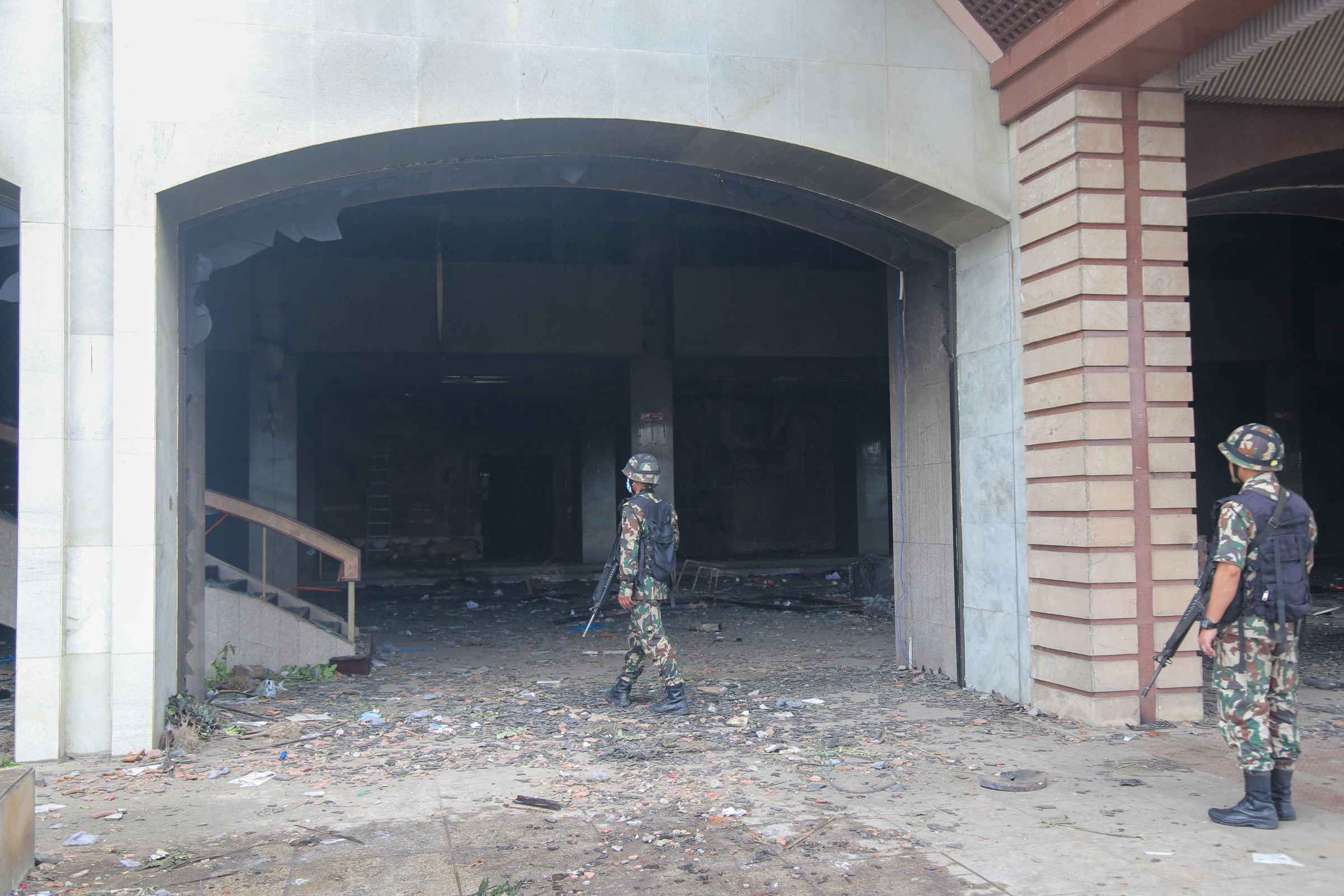 |
Soldiers guard the Nepalese parliament building in Kathmandu after it was set on fire by protesters on 9/9. Photo: AFP |
Soldiers guard the Nepalese parliament building in Kathmandu after it was set on fire by protesters on 9/9. Photo: AFP
Nepalese Prime Minister Sharma Oli resigned on 9/9, but this did not calm the situation. Leaders of major security agencies in Nepal issued a joint statement calling on political parties to find a peaceful solution, but the power vacuum left by the departure of several high-ranking officials led to direct military intervention.
Nepalese citizens burned the parliament building, the ruling party's offices, and several government buildings. They attacked the residences of many leaders, including Oli's private home, those of two former prime ministers, and that of Interior Minister Ramesh Lekhak, who resigned earlier to take responsibility for the deaths during the protests. The wife of former Prime Minister Jhala Nath Khanal was severely burned and died in an arson attack.
Vu Hoang (According to AFP, Reuters, WION)



